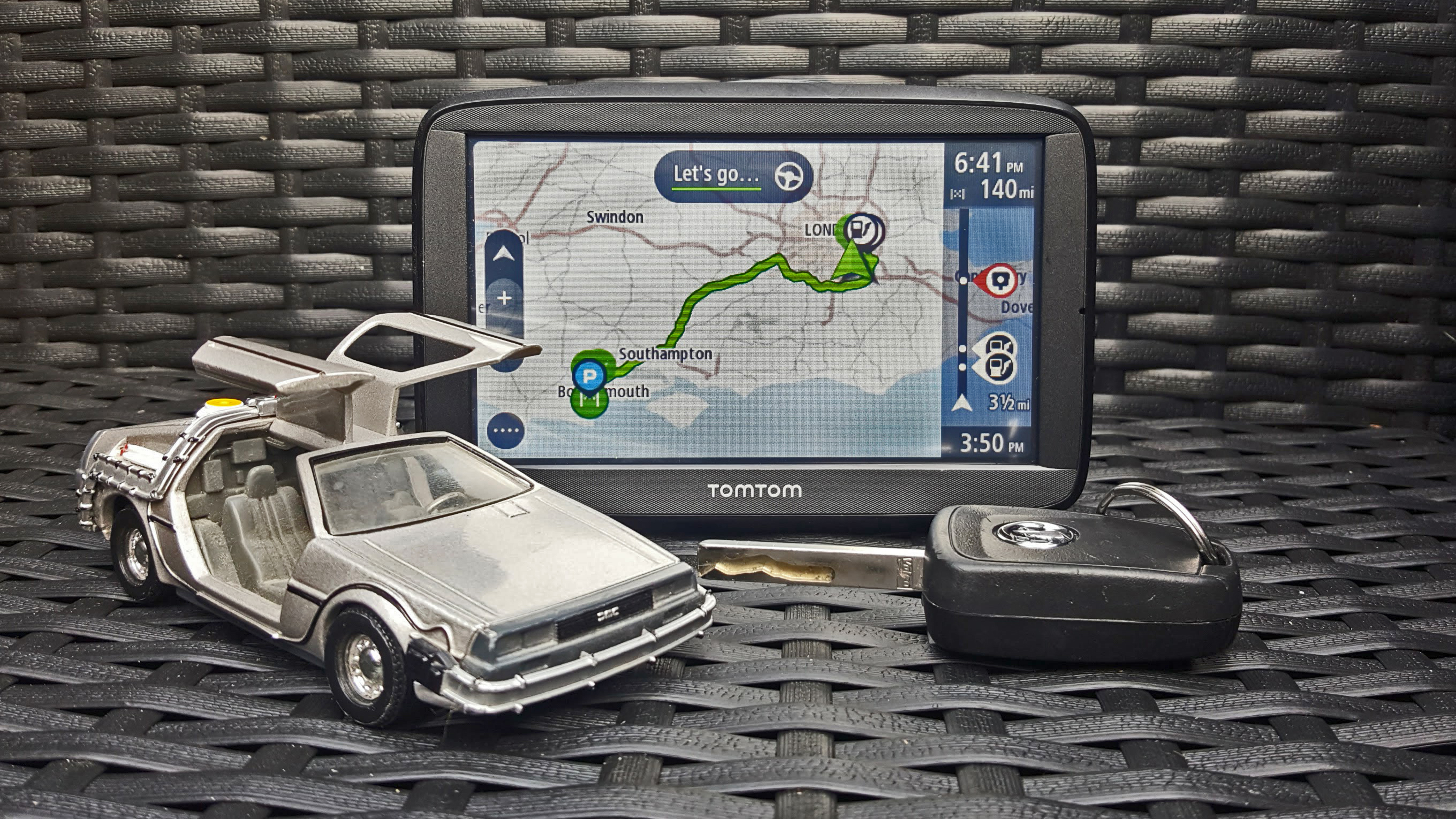Why you can trust TechRadar
Features and functionality
We’ve already mentioned the hands-free functionality on the sat nav and that’s a really useful feature to have on a device such as this. But there’s a number of other features that make this sat nav really easy to use. For a start, there’s voice control.
Given voice is the next go-to place for operating devices, it makes sense that it’s used in the Via 52. It’s no Siri but the commands we threw at it were ably accepted.
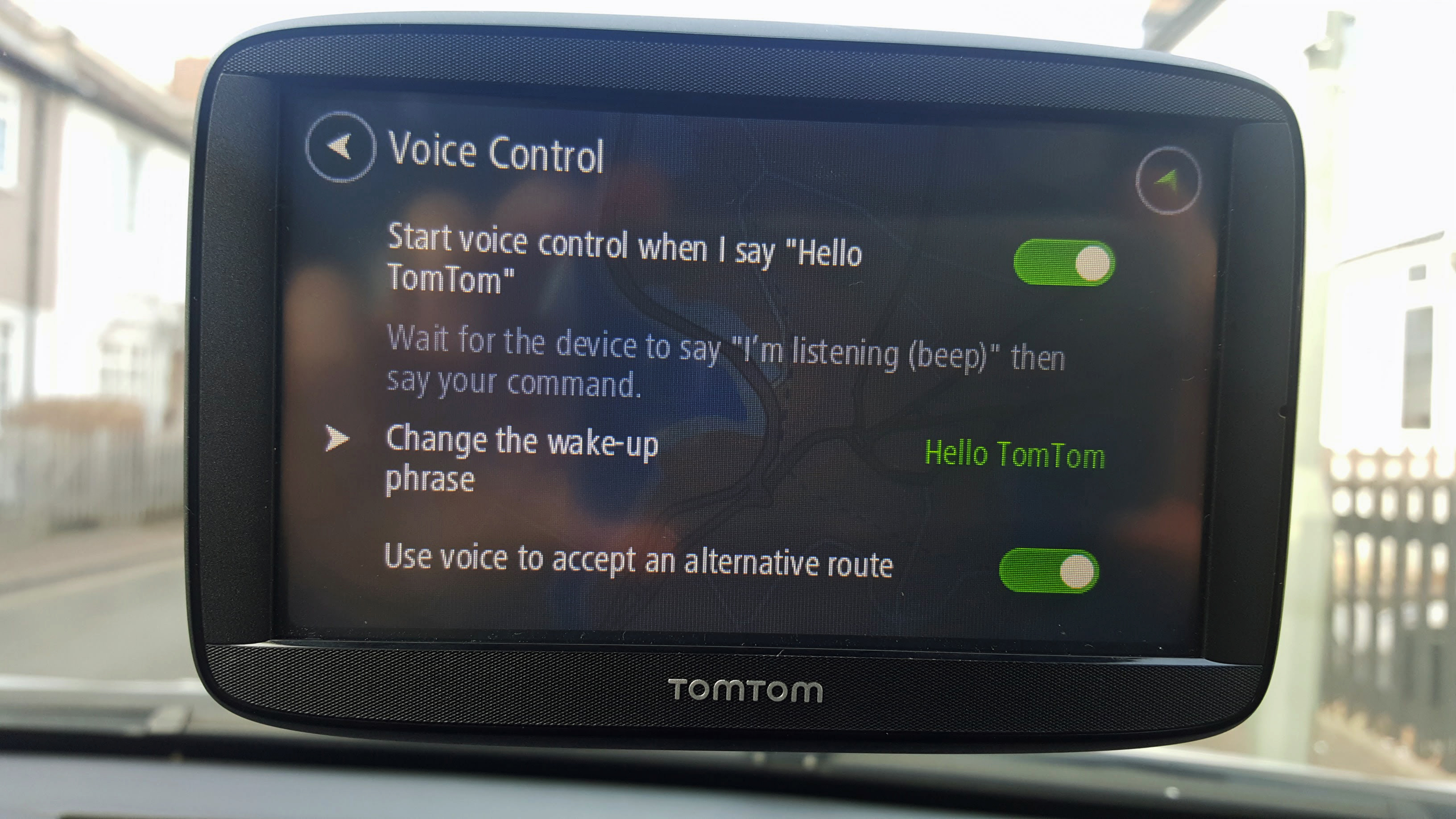
As there’s limited phrases to use, TomTom also puts these on the screen so you know what you can and can’t say. Saying “Hello TomTom” wakes the sat nav from its slumber and it’s from here you can plan your route.
When it comes to route planning, there are a number of options. One of the more intriguing ones, is Eco. Choose this and it will find the most eco-friendly route available.
Every time we tried it, though, it felt like we were just being offered the fastest route and not the one that would be the most economical on fuel - like a steady run on a motorway - but it’s good to see TomTom trying something different here.
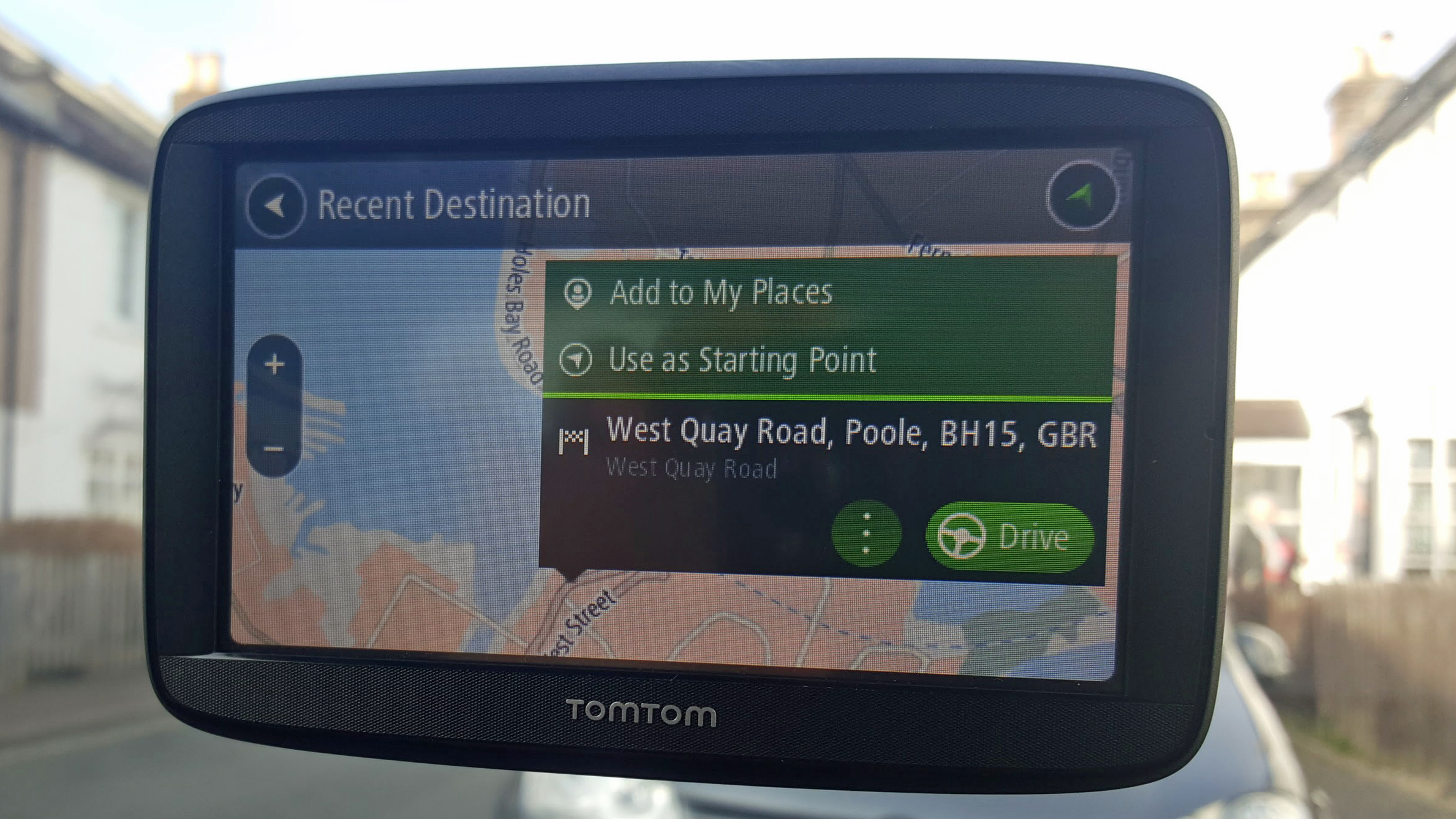
Finding places was a dream on the Via 52. TomTom’s mapping has always been second to none and remains be the big thing to draw drivers away from free alternatives; that and the least robotic-sounding voice around.
TomTom nails it again on the Via 52. It sometimes takes its time to find the route - especially when you ask it for an alternative - but once the course is locked, it rarely dropped for us or had to reload.
Sign up for breaking news, reviews, opinion, top tech deals, and more.
The UI is something you will be very used to with TomTom devices. A nice touch is having all the speed camera/fuel stop information on a right-hand bar. It takes the clutter away from the main map.
Setting up your phone to the Via 52 was pretty simple, too. To get it to work, you link up the sat nav to your phone through Bluetooth and setting up a personal hotspot on your phone, then activate traffic notifications on the device - this is something you get free for a lifetime.
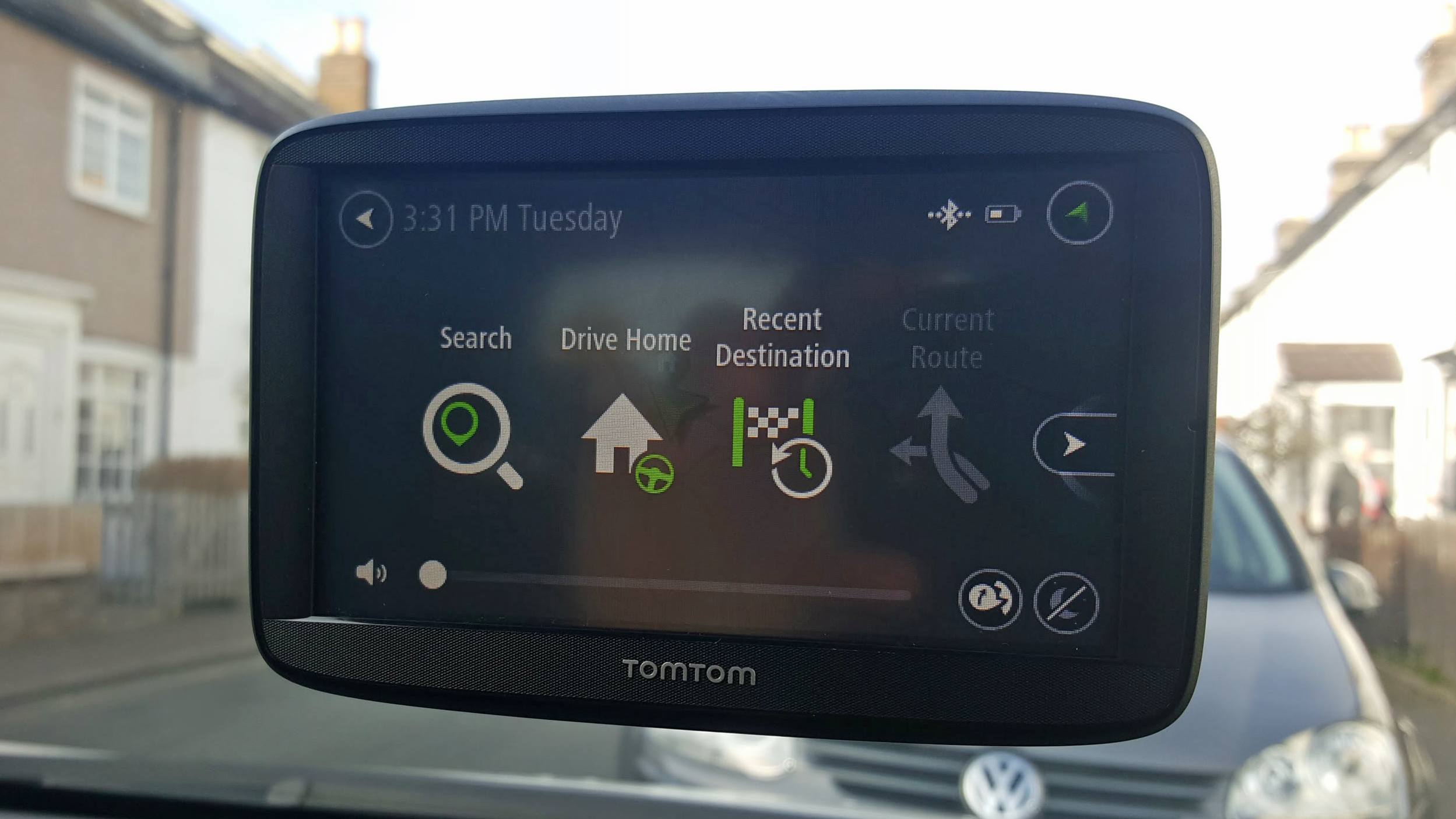
We didn’t notice any noticeable eating of our data either, so the information TomTom is using your phone’s data for is pretty light. TomTom reckons around 7MB a month if you travel an hour a day. You will also get speed camera updates.
The device comes with this free for three months. After that, you’ll have to pay £19.99 a year for the privilege. The data it offers is decent, but unless you are paranoid about your speed it’s not something you need to bother with.
As for maps, you have the option for UK (£139) or Europe (£149). Europe costs £10 more but is more than worth it, given they will last the lifetime of the device. If you are going to take this sat nav global, then there’s 16GB of on-board storage to store more maps and a microSD slot so you can ‘map’ up to your heart’s content.
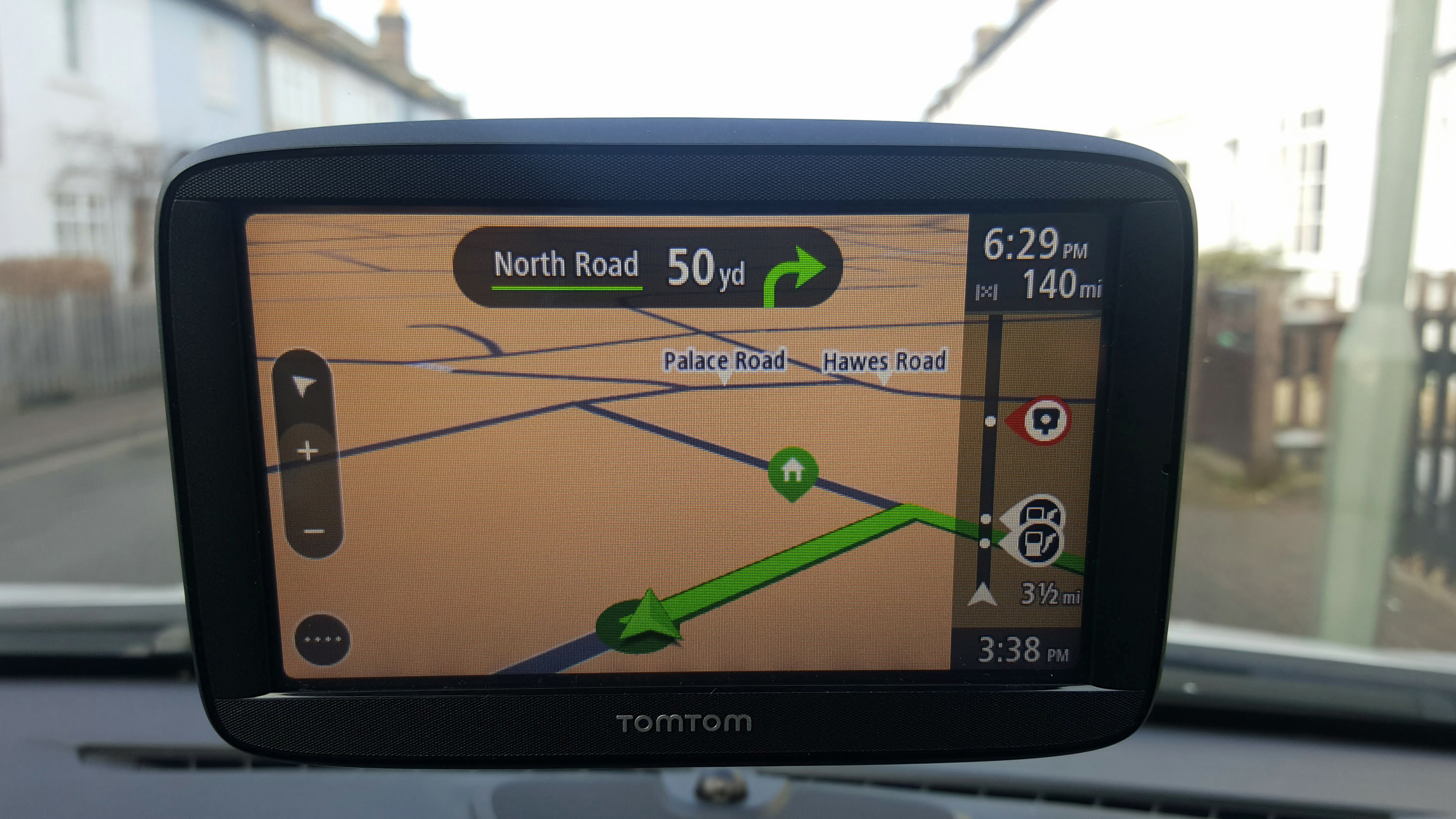
Wherever you’re going, however, don’t forget to take the accompanying charging cable. It fits into your car’s aux port - or the cigarette lighter for those who still use it as such - and will stop you from getting annoyed with the TomTom Via 52’s poor battery.
An hour on a charge just isn’t good enough - especially as most people will be using their PND to go some distance. TomTom could have also offered up a double USB port on the connector, so you could also plug your phone in at the same time - especially as you are using a personal hotspot that can eat at your battery - but there’s only a single one in the box.
Verdict
Battery life aside, the TomTom Via 52 is a very capable, competent sat nav system. If you still get the fear about using your phone as a navigational device, then the Via 52 is a great ‘upgrade’.
Using the data on your phone to provide traffic analysis is a clever way to keep the device’s cost down and while it’s not the slimmest, best-looking sat nav around, it’s a well made piece of kit.
Just don’t forget the charger!

Marc Chacksfield is the Editor In Chief, Shortlist.com at DC Thomson. He started out life as a movie writer for numerous (now defunct) magazines and soon found himself online - editing a gaggle of gadget sites, including TechRadar, Digital Camera World and Tom's Guide UK. At Shortlist you'll find him mostly writing about movies and tech, so no change there then.
